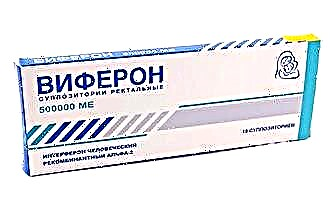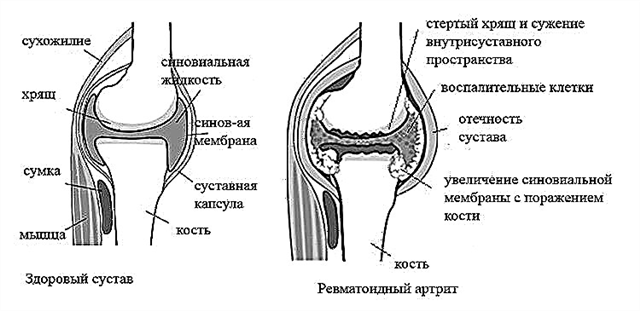Acute otitis media is a rapidly developing inflammation in the mucous membranes of the organ of hearing, which is accompanied by tissue edema and pain. Inflammatory processes in the ear lead to dysfunction of the auditory analyzer, as a result of which hearing loss occurs. Children under the age of three years are more susceptible to the disease, which is due to a weakened immune system and the anatomical features of the structure of the Eustachian tube.
Untimely treatment of ear pathology can cause its transition to a chronic form. Sluggish inflammation negatively affects tissue trophism, which leads to edema and perforation of the tympanic membrane, as well as restriction of the mobility of the auditory ossicles. It is these organs that play a key role in the perception of sound signals. Their dysfunction contributes to the development of autophony, hearing loss and deafness.
Development mechanism

Inflammatory processes in the mucous membranes of the organ of hearing in 85% of cases develop as a result of their infectious lesion. Conditionally pathogenic microorganisms begin to actively develop in the presence of failures in the immune system, leading to a decrease in the reactivity of the organism. According to medical research, the following disease-causing agents are the main provocateurs of catarrhal processes:
- rhinoviruses;
- enteroviruses;
- adenoviruses;
- Candida fungus;
- staphylococci;
- Pseudomonas aeruginosa;
- tubercle bacillus;
- aspergillus;
- metapneumoviruses.
Otitis media is most often a complication of bacterial and viral infections such as tonsillitis, sinusitis, pharyngitis, sinusitis, etc.
With the development of a systemic disease, local and general immunity decreases, which is an impetus for the spread of pathogenic flora in the nasopharynx. By the tubular route through the Eustachian tube, bacteria or viruses penetrate the mucous membrane of the hearing organ, provoking inflammation. Edema of the auditory canal increases the pressure difference on the eardrum from the outside and from the inside, as a result of which pain occurs.
In infants, the Eustachian tube is wider and shorter than in adults, which increases the risk of acute otitis media by 3 times.
Etiology of the disease
 Acute ear inflammation is often caused by the development of common diseases of an infectious etiology. However, catarrhal processes in the tissues of the organ of hearing can be provoked by microtrauma of the external auditory canal or serious trauma to the skull. According to practical observations, ear pathology most often appears as a result of weakened immunity, which is due to the influence of the following factors:
Acute ear inflammation is often caused by the development of common diseases of an infectious etiology. However, catarrhal processes in the tissues of the organ of hearing can be provoked by microtrauma of the external auditory canal or serious trauma to the skull. According to practical observations, ear pathology most often appears as a result of weakened immunity, which is due to the influence of the following factors:
- congenital immunodeficiency;
- tendency to allergies;
- curvature of the nasal septum;
- vitamin deficiency and lack of trace elements;
- endocrine disorders;
- detoxification organ disease;
- bad habits.
In infants, the disease is often caused by regurgitation of formula after feeding. This can lead to food particles entering the ear canal, which is fraught with the development of bacteria and, as a result, infection of the middle ear. The tympanic cavity in newborns and children under one year old is lined with myxoid tissue, which has a loose structure. When pathogens enter the middle ear, embryonic gelatinous tissue quickly succumbs to infection, which leads to the development of inflammatory processes.
In children, the Eustachian tube is located very close to the adenoids. Therefore, even a runny nose or sore throat can trigger the development of otitis media in a child.
Signs of development of otitis media
The development of ENT disease is accompanied by a vivid manifestation of symptoms, the main ones of which are pain and a feeling of stuffiness in the ears. Within 7-10 days, otitis media goes through all the main stages of its development, but if untreated, the inflammatory process can turn into a sluggish form. The main symptoms of acute otitis media are:
- noises in the ear;
- feeling of congestion;
- shooting or aching pains;

- deterioration in appetite;
- hearing loss;
- resonating voice in an inflamed ear.
When the outer parts of the ear are damaged, hyperemia of the affected tissues is noted with the possible appearance of erythematous rashes and boils.
In the case of development of otitis media and internal otitis media, pain sensations inside the ear are enhanced by palpation of the tragus.
The course of exudative inflammation of the tympanic cavity is usually limited to a slight decrease in hearing and serous discharge from the external auditory canal.
Types of acute otitis media
There are several types of acute otitis media in adults and children, which is due to the localization of the foci of inflammation. The human ear consists of three main sections: outer, middle and inner, which is most often called the labyrinth. In this regard, with the development of acute inflammation in the ear, the following types of ENT diseases can be diagnosed:
- otitis externa is an inflammatory process that occurs in the external auditory canal and auricle. It is conventionally divided into two types: limited and diffuse. The first is represented by inflammation of a small area of the skin on which a furuncle is formed, and the second is an extensive lesion of all parts of the outer ear;
- otitis media - a pathological change in the tissues of the tympanic cavity, Eustachian tube and mastoid process. Depending on the clinical manifestations of pathology, it can be catarrhal, exudative or purulent;
- labyrinthitis - inflammation of the bone and soft tissues of the labyrinth, consisting of semicircular canals and a spiral cochlea. Due to the onset of otitis media, they are divided into hematogenous, tympanogenic and meningogenic.
In 25% of cases, when ear pathologies are detected, acute otitis media is diagnosed.
The principles of treatment of acute otitis media are determined by the localization of lesions, the prevalence of inflammation, the type of infectious agent and the age of the patient. For this reason, otolaryngologists recommend contacting specialists when a problem arises, and not self-medicate.
General principles of treatment
 In otolaryngology, several directions are used in the treatment of acute otitis media, characterized by inflammation in the mucous membranes of the organ of hearing. To relieve the symptoms of the disease, local drugs are used, which have decongestant, antibacterial and analgesic properties. Systemic antibiotics of a wide spectrum of action allow to eliminate the pathogenic flora in the foci of inflammation. To improve tissue trophism and restore the drainage function of the Eustachian tube, they resort to the use of physiotherapy procedures.
In otolaryngology, several directions are used in the treatment of acute otitis media, characterized by inflammation in the mucous membranes of the organ of hearing. To relieve the symptoms of the disease, local drugs are used, which have decongestant, antibacterial and analgesic properties. Systemic antibiotics of a wide spectrum of action allow to eliminate the pathogenic flora in the foci of inflammation. To improve tissue trophism and restore the drainage function of the Eustachian tube, they resort to the use of physiotherapy procedures.
Important! If it is necessary to use antibiotics in the treatment of children, the emphasis is on drugs of the penicillin and cephalosporin series. They are less toxic, therefore they do not provoke allergic reactions.
Due to the reduced reactivity of the child's body, there is a risk of recurrence of the disease. To reduce the likelihood of exacerbation of ENT pathology, immunostimulants and non-toxic immunocorrectors are included in the scheme of pediatric therapy. Particular attention is paid to the intake of vitamin preparations, which include ascorbic acid.
Review of effective drugs
Treatment of acute otitis media in adults is accompanied by the use of drugs of local and systemic action. The choice of specific groups of medicines is determined by the type of infectious agent, the stage of development of the disease and concomitant symptoms. As part of conservative therapy, specialists use the following types of drugs:
- topical decongestants (Galazolin, Nazivin) - reduce vascular permeability, which helps to eliminate puffiness;
- antibiotics ("Aksitin", "Ekobol") - prevent the reproduction of microbes, which leads to the elimination of pathogenic flora in the foci of inflammation;
- corticosteroids ("Sofradex", "Candibiotic") - reduce inflammation, which accelerates the epithelialization of the mucous membranes;
- antiseptics ("Dioxidin", "Miramistin") - inhibit the development of pathogens in the ear canal, resulting in increased local immunity;
- antimycotics ("Pimafukort", "Candide") - kill pathogenic fungi that cause inflammation in the ear.
To achieve the desired therapeutic result, it is advisable to combine drug therapy with physiotherapy procedures. At the stage of ENT pathology progression, one can resort to catheterization, iontophoresis and faradization of the auditory canal.




